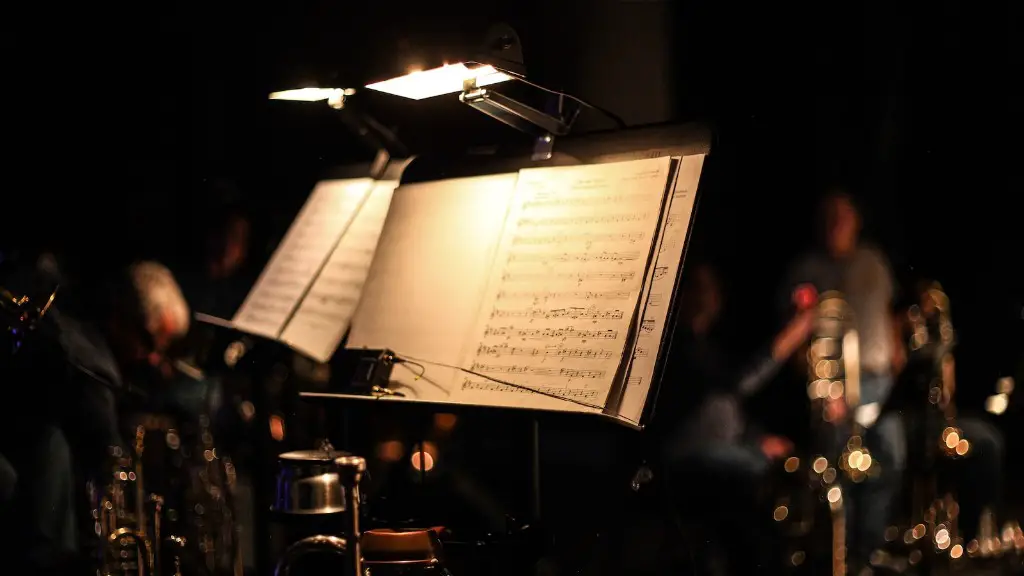Experimental music composer John Cage once said, “there is no such thing as an empty space or an empty time.” With that in mind, atonal music composition can be seen as an act of filling up sonic space and time with interesting and engaging sounds. The challenge for the atonal composer is to create a work that is enjoyable to listen to, while still being structurally and harmonically interesting.
One of the most important aspects of atonal composition is the use of dissonance. Dissonance is when two or more notes are played together that create a harsh, or “clashing” sound. While this might seem like a negative thing, dissonance is actually a very important tool for atonal composers. By strategically placing dissonant notes next to each other, composers can create a sense of tension and release that can be very exciting to listen to.
Another important aspect of atonal composition is the use of computers and other technology. With the help of technology, atonal composers can create sounds that would be impossible to create with traditional instruments. This allows for a much wider range of sonic possibilities, and opens up new possibilities for how atonal music can sound.
Atonal music is music that does not conform to any tonality or key. This type of music often uses a technique called serialism, in which musical elements are manipulated in a systematic way in order to create a desired effect.
How is atonal music made?
Atonality is a relatively new concept in music, only really coming into existence in the early 20th century. In this sense, it refers to compositions where a hierarchy of harmonies focusing on a single, central triad is not used, and instead the notes of the chromatic scale function independently of one another. This can create a sense of unease or tension in the music, as there is no clear tonal center to provide stability. Atonal music is often associated with the avant-garde or with modernism, as it challenges traditional ideas about what music should sound like.
Atonal music is music that does not follow the rules of tonality. These rules work to create tonal hierarchies, or systems in which certain notes are more important to the music than others. Composers interested in atonality work to break these rules by making all notes more equal in importance.
Does atonal music have a key
Atonality in music refers to the lack of a tonal center, orkey. Atonal music is often described as sounding ” aimless” or “directionless”, as there are no real harmonic or melodic references to guide the listener. This can be contrasted with tonal music, which typically has a clear sense of direction and a strong tonal center. In the context of jazz, “atonal” usually refers to a song that has no clear chord structure. The chords may follow each other in a seemingly random order, making it difficult to hear the overall harmonic progression of the song. This can be a challenge for jazz musicians, as they must create a sense of coherence and direction within the atonal framework.
Pierrot Lunaire and Wozzeck are both atonal works, meaning that they do not follow a traditional tonal structure. This can be seen in the way that the melodies are often fragmented and disjointed, and the harmony is often unstable. This lack of tonality gives these works a feeling of tension and unease, which can be quite effective in conveying certain emotions or ideas.
How many notes are used in atonal music?
Atonal music is music that does not follow a traditional tonal center or key. This type of music is usually considered to be more modern and experimental. Atonal music often uses all 12 notes of the chromatic scale equally, creating a more chaotic sound. This can be contrasted with music that follows a more traditional tonal center, which usually uses a smaller range of notes and has a more predictable melody.
Atonal music is music that does not exist in a major key or a minor key. It is based around the chromatic scale, which is a 12-note scale that includes all available pitches played in order. Atonal music is often more complex and dissonant than tonal music, and it can be more challenging to listen to.
What is an atonal chord?
Atonal means that the note or chord in question does not belong to the tonality. For example, the F# note is atonal to the key of C major.
Consonance is a pleasing sound, a “sounding together.” Its opposite is dissonance, an unpleasant sound. Atonality is simply the absence of tonality, tonality being the musical system based on major and minor keys.
Is Jazz tonal or atonal
Different properties of functional tonality in jazz include the rules dictating the unfolding of harmonic function, voice-leading conventions, and the overall behavior of chord tones and chordal extensions. These properties create a unique sound that is different from common-practice classical music.
Atonal music is music that does not provide a tonic reference point nor corresponding chords of significant but lower importance. This lack of pitch hierarchy not only has perceptual but also cognitive implications.
What is the rarest key in music?
A-sharp minor is a less popular key for composition due to its impracticality. The music in this key can sound eerie and dark, making it popular for horror movie scores.
Arnold Schoenberg was an Austrian-American composer who was a pioneer in atonal and 12-tone composition. He was also an influential teacher, with pupils including Alban Berg and Anton Webern.
Is Debussy’s music atonal
Debussy’s music is defined by its sensory content and frequent usage of atonality. This was directly inspired by the Symbolism movement of his time period, of which he was an active cultural participant. His music therefore often reflects the themes and atmosphere of the Symbolist writers of his day.
Jazz is less academic about atonality than serialism. This is probably because it’s too difficult to improvise using such rigid and complex rules, and because it completely defeats the purpose of Free Jazz – which is to have more freedom to improvise.
What does atonality sound like?
Atonality is a type of music that is built upon tone rows having all 12 tones instead of just a few. This means that there is no real tonal center, and the music can be quite dissonant. Atonality was first developed in the early 20th century by composers such as Arnold Schoenberg and Anton Webern.
This style of composition is most associated with the Second Viennese School, a group of composers whose figurehead was Arnold Schoenberg and which also included the influential composers Anton Webern and Alban Berg. The Second Viennese School composers were among the first to use atonality, or music without a tonal center, and they are responsible for developing many of the 12-tone techniques that are still used today. While their music can be complex and challenging, it is also often deeply expressive and beautiful.
Do people listen to atonal music
Although atonal music has not always been popular, it has earned a loyal following due to its high diversity and avant-garde nature. This musical style is typically niche, but its small audience is dedicated and passionate. As a result, atonal music continues to be developed and performed, despite its limited appeal.
A tritone is an interval of three whole tones, or six semitones. It is the largest interval in common use in Western tonal music, and though it occurs infrequently in music of other traditions, it has been called “the devil in music” because of its dissonant sound.
Conclusion
Atonal music is music that does not follow a tonal center, or key. This type of music is usually seen as being more modern and experimental. To compose atonal music, you will need to explore different sound combinations and progressions that do not rely on a tonal center. This can be a challenge, but it can also be very rewarding to create something unique and innovative. There are no rules when it comes to atonal music, so feel free to experiment and see what you can come up with!
While atonal music may seem like a daunting task to compose, it can actually be quite enjoyable and freeing once you get the hang of it. There are no set rules to composing atonal music, so you are free to experiment with different sounds and techniques. The best way to learn how to compose atonal music is to listen to as much of it as you can and experiment with composing your own pieces. With a little practice, you’ll be composing atonal music like a pro in no time!


